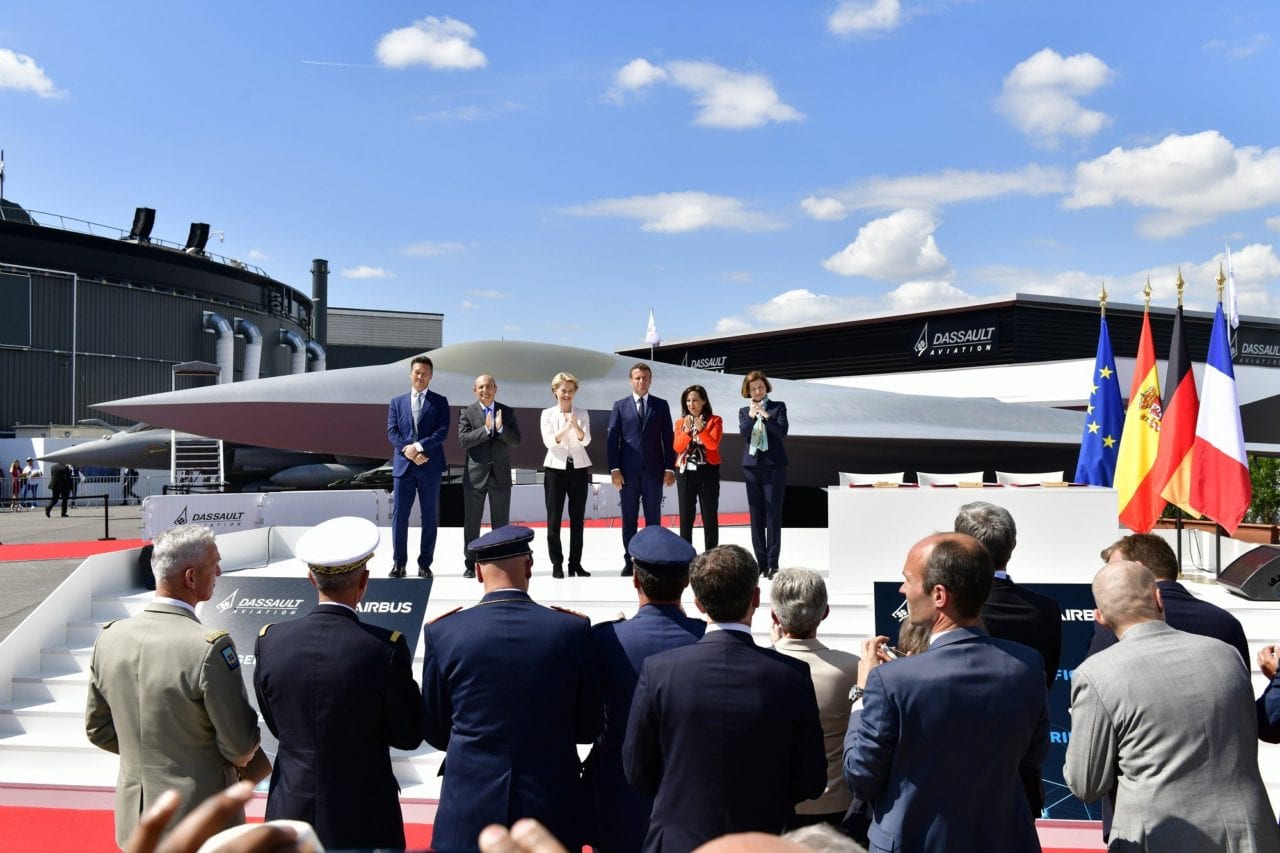
European officials meet for the signing of the FCAS industrial agreement last June. Photo: Dassault Aviation
The military and commercial outlook for avionics sales is strong, according to the author of a new Deloitte report, the 2020 Global Aerospace and Defense Industry Outlook.
“The outlook for the aerospace avionics market is positive with good growth expected over the next few years, primarily due to the strong aircraft order book,” Robin Lineberger, the leader of Deloitte global aerospace and defense, wrote in an email to Avionics International.
“Moreover, all the major global militaries are increasing their spending on acquiring advanced military aircraft, further driving the growth for avionics,” Lineberger wrote.
Such aircraft include the Japanese F-3 twin-engine stealth fighter by Mitsubishi to replace the country’s single-engine Mitsubishi F-2 jets and to complement the country’s Lockheed Martin F-35s; the European Future Combat Air System (FCAS); and the United States Air Force’s sixth generation fighter.
In June at the Paris Air Show, Dassault Aviation unveiled an FCAS mock up, as government and company officials signed an FCAS Industry Agreement on Demonstrator Programs.
The latter accord covers the main components of FCAS: a new generation, manned fighter; support “remote carrier” drones; and an Air Combat Cloud to integrate sensors. FCAS is to replace Dassault’s Rafale fighter and the Airbus/BAE Systems/Leonardo-built Eurofighter.
During the unveiling of the mock up, French President Emmanuel Macron said that he favors German-French-Spanish cooperation on FCAS with the British, which are developing their own advanced fighter through the BAE Systems Tempest program.
In early October, the Air Force officially stood up a new program executive office to lead Digital Century Series, which will look to rapidly develop and field new aircraft beginning with the service’s sixth-generation fighter. Last week, Will Roper, the Air Force’s service acquisition executive, said that the new Digital Century Series initiative will look to improve integration of emerging technologies by buying smaller quantities of new fighter jets, potentially from multiple companies at a time.
“Demand for military equipment is on the rise as governments across the globe focus on military modernization, given increasing global security concerns,” according to the new Deloitte report. “The uncertainty and sustained complexity of the international security environment worldwide is likely to boost global defense spending over the next five years.”
In 2020, global defense spending will reach around $1.9 trillion, driven mainly by the U.S. but also countries such as China, Russia and India, the 14-page report says. It adds that NATO members in Europe, under pressure from the U.S., are also increasing defense spending to hit a target of 2 percent of GDP, and tensions in the Middle East are also driving demand for defense equipment.
By 2023, global defense spending is expected to be $2.1 trillion, Deloitte said.
Commercial and general aviation avionics sales are also expected to grow.
“Demand for new and advanced flight capabilities from airlines and small general aviation aircraft owners to make flight operations more efficient and safer will continue to drive demand for commercial avionics,” Lineberger wrote in his email to Avionics International. “Moreover, significant investments will be made on avionics because of government-mandated upgrades, for instance, the mandates for Automatic Dependent Surveillance/Broadcast capability (ADS-B), Head-Up Displays (HUD) and Controller/Pilot Datalink Communications equipment (CPDLC). However, there are some challenges which include longer product development cycle that leads to increased development costs.”
Urban air mobility, electric propulsion and fully automated flight decks are technology trends to watch in years ahead, according to the Deloitte report.
“Although commercial aircraft manufacturers are increasingly relying on automated flight controls, including automated cockpits, the commercial aerospace sector is aiming to transition to fully automated flight decks,” Lineberger wrote in his email. “Such a transition will likely reduce the number of crew members in the cockpit, resulting in lower costs for airlines. Moreover, automated flight decks would also address the growing pilot shortage issue currently faced by the aviation industry, which will likely be accentuated in the future as the commercial aircraft fleet continues to grow.”